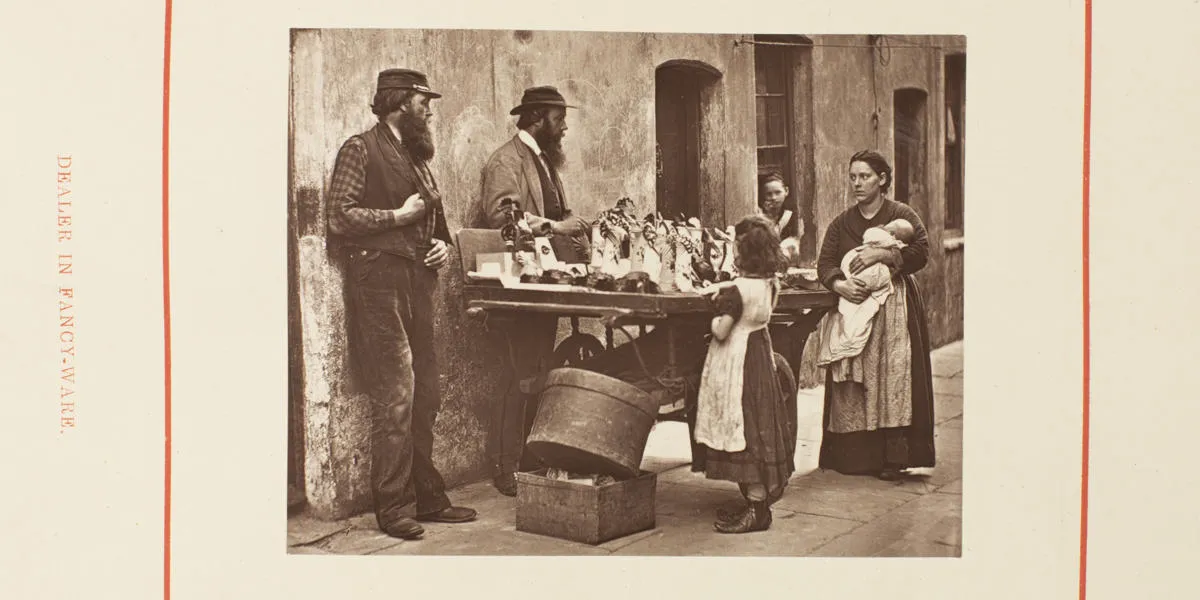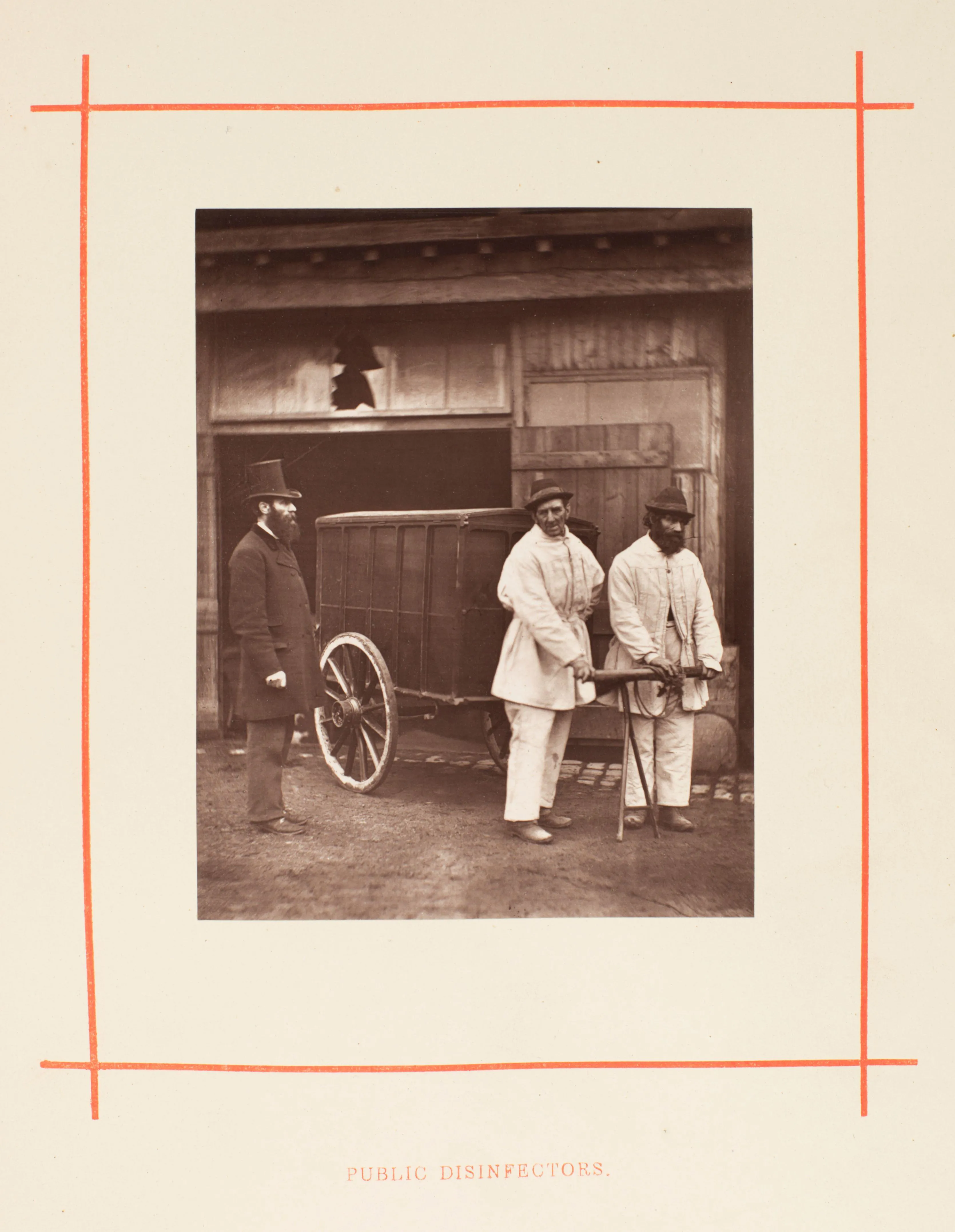Social Investigation and Street Life in Victorian London

Life on the streets of London was a topic of great interest for the Victorians. Appetite for publications focusing on the daily life and squalid conditions of London’s underclass was satiated by the work of social investigators.
Navigating streets and slums, these investigators interviewed and photographed Londoners who made the streets their home and workplace. Two of the most famous were Henry Mayhew (1812 – 1887) and John Thomson (1837 – 1921).
… we have visited, armed with notebook and camera, those back streets and courts where the struggle for life is none the less bitter and intense, because less observed.
Social Investigation
Mayhew initially wrote ‘London Labour and the London Poor’ in the 1840s as a series of articles, before publishing them in 1851. A pioneering work of social research, Mayhew was among the first to give a platform to the people of London’s streets, seemingly written not just about this class but by them, with Mayhew appearing to directly quote and preserve their cockney dialect.
From costermongers to cats and dogs’ meat sellers, and sewer hunters to street clowns, Mayhew’s work is often viewed as the definitive street life encyclopaedia – praised for its ‘empathetic’ depiction of London’s poor.

John Thomson was a photojournalist who, alongside Adolphe Smith, published a photographic account on ‘Street Life in London’ in 1877. Cabmen, public disinfectors and street fruit sellers are just a few to feature, each with an accompanying photograph.
Published three decades after ‘London Labour and the London Poor’, Thomson and Smith's work in ‘Street Life’ acknowledges Mayhew’s contribution to the field but seeks to advance on his work. Thomson and Smith believed their work to be superior in quality to others, which they reflect upon here:
The unquestionable accuracy of [photography enabling] us to present true types of the London Poor and shield us from the accusation of either underrating or exaggerating individual peculiarities of appearance.
Whilst it should be noted when discussing the accuracy of the photography that the subjects in 'Street Life' were posed rather than candidly shot, they nonetheless visualise London’s street life, capturing the characters, jobs and conditions of the Victorian lower class that would otherwise be lost.

Street Traders
References to accusations of “exaggerating individual peculiarities” possibly alludes to the backlash Mayhew’s work received from some street traders. Meetings were hosted by the Street Traders’ Protection Association for people to complain about defamatory comments against their morals and character. People believed that Mayhew portrayed them, to the largely middle-class readership, as lazy and lacking social and religious values.
Seen through this lens, the numerous instances of what are presented as direct quotes become questionable, use of cockney dialect becomes a caricature, and with Mayhew depicting a people that would be commercially successful rather than what was the reality. However, viewing Mayhew’s work in this way, risks disparaging the information it contains entirely. This is problematic considering the wealth of detail on numerous professions and their cultural idiosyncrasies that is contained within.
The costermongers and Mayhew met and interacted with each other, and the street traders did influence the image the journalist created of them. However, he dealt with his impressions in his own way, developing novel… perspectives out of this interaction.
John Thomson Photographs
You can view a selection of John Thomson's photographs on the London Picture Archive.
Explore the John Thomson collectionFurther reading
- 'Henry Mayhew and the Street Traders of Victorian London London — A Cultural Exchange with Material Consequences' by Ole Münch (2017) published in The London Journal Volume 43, Issue 1, 2018
- London Labour and the London Poor: A Selected Edition by Henry Mayhew, edited by Robert Douglas-Fairhurst, 2010